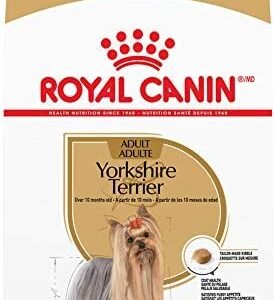Have you ever marveled at the culinary diversity of human food and wondered if your furry friend could partake in this flavorful world? Plantains, a tropical delight adored in many cuisines, often make their way into our dishes. But when it comes to our beloved canines, the question arises: can dogs eat plantains?

In this article, we will embark on a journey to explore the fascinating realm of plantains and their compatibility with our canine companions. We’ll dig deep into the topic, dissecting the facts and providing you with insights to ensure your dog’s health and well-being.
Canine Curiosities
Dogs, our loyal and lovable companions, have distinct dietary needs. As responsible pet parents, it’s crucial to be aware of what our four-legged friends can and cannot eat. So, let’s dive into the intricacies of their diet and discover the truths about plantains.
Unmasking the Purpose
In this comprehensive article, we aim to answer the question that plagues many pet owners: can dogs eat plantains? The journey doesn’t stop there. We will unravel the pros and cons of introducing plantains to your dog’s diet. How much is too much, and what should you do if your dog consumes a part of a plantain that is not edible or safe for dogs? Our mission is to equip you with the knowledge and insights you need to make informed decisions about your dog’s diet.
Are you ready to explore the world of plantains for dogs? Let’s embark on this culinary adventure to ensure your furry friend enjoys delicious and safe treats.
Table of Contents
Can Dogs Eat Plantains?
Can dogs eat plantains? It’s a question that might have crossed your mind as you enjoy the sweet and starchy goodness of this tropical fruit. Let’s delve into this intriguing topic and unravel the mysteries surrounding plantains in your dog’s diet.
The Safety of Plantains for Dogs
Plantains themselves are not toxic or dangerous to dogs. In fact, many dogs find the taste of this starchy treat quite enjoyable. These fruits have a unique flavor that can be intriguing for your furry friend.
Nutrition facts of plantains
Now, let’s take a closer look at the nutrition facts of plantains in the following table:

| Nutrient | Amount per 100g |
|---|---|
| Calories | 122 kcal |
| Carbohydrates | 31 g |
| Fiber | 2.3 g |
| Protein | 1.3 g |
| Vitamin A | 1127 IU |
| Vitamin C | 18.4 mg |
| Potassium | 499 mg |
Plantains offer some nutritional benefits for dogs. They are a good source of dietary fiber, which can aid in digestion. Additionally, they contain essential vitamins and minerals, such as vitamin A, vitamin C, and potassium.
The Drawbacks of Plantains
While plantains offer nutritional benefits, they also come with certain drawbacks. One of the main concerns is their high carbohydrate content. Excessive consumption of carbohydrates can lead to weight gain and related health issues in dogs. Moreover, the sugar content in ripe plantains may not be suitable for diabetic dogs, so it’s essential to exercise caution.
In addition to their sugar content, plantains can also be challenging for some dogs to digest, potentially leading to gastrointestinal discomfort. It’s crucial to remember that plantains should complement, not replace, a dog’s primary diet. They are best enjoyed as an occasional treat rather than a staple in your pet’s daily meals.
By understanding both the positive and negative aspects of feeding plantains to your dog, you can make informed decisions about their diet. In the next sections, we will further explore the nuances of including plantains in your dog’s culinary adventures.
Serving Plantains to Your Canine Companion: A Balancing Act
Understanding how much plantains your dog can safely consume is pivotal in ensuring their health and well-being. Here, we’ll delve into the intricacies of serving sizes, preparation, and other crucial considerations.
Moderation is Key
First and foremost, it’s essential to emphasize that moderation is key when it comes to feeding plantains to your dog. Treats, including plantains, should only constitute a portion of your dog’s daily calorie intake. An excessive intake of treats can lead to weight gain and nutritional imbalances, which may harm your furry friend’s health.
Starting Small
As with any new addition to your dog’s diet, it’s wise to start with a small piece of plantains and observe how your dog reacts. Not all dogs have the same tolerance for new foods. Some may readily accept plantains, while others may require a gradual introduction. Pay close attention to any signs of digestive discomfort or allergies, which may include vomiting, diarrhea, or skin issues. If you notice any adverse reactions, discontinue feeding plantains.
Preparing Plantains for Your Dog
Proper preparation is crucial to ensure that plantains are safe and digestible for your dog. Here’s how you should prepare plantains before offering them:
Peel and Remove Seeds: Start by peeling the plantains and removing any seeds or tough fibers. While the flesh of the plantain is safe for dogs, the seeds and tough parts can be challenging to digest.
Cook Thoroughly: It’s recommended to cook plantains thoroughly before serving them to your dog. Cooking makes plantains softer and more digestible. Boiling or steaming plantains without adding any seasoning is a safe cooking method.
Cut into Small Pieces: To prevent choking hazards, cut the plantains into small, bite-sized pieces. This also makes it easier for your dog to eat and digest them.
Size and Breed Matter
The size and breed of your dog can significantly affect how much plantains they can tolerate. Larger dogs typically have more substantial caloric needs and may be able to consume a bit more without adverse effects. Conversely, smaller dogs have lower caloric needs and should have smaller servings. It’s crucial to adjust the serving size based on your dog’s size, breed, and individual dietary requirements.
Appropriate Serving Sizes
Determining the appropriate serving sizes of plantains for your dog involves considering their weight. Here’s a rough guideline to help you decide how much plantains to offer:
- Small Dogs (up to 20 pounds): 1-2 small bite-sized pieces, a few times a week.
- Medium Dogs (20-50 pounds): 2-3 small bite-sized pieces, a few times a week.
- Large Dogs (50+ pounds): 3-4 small bite-sized pieces, a few times a week.
These are general recommendations, and your dog’s specific needs may vary. Always monitor your dog’s reaction to plantains and adjust serving sizes accordingly.
In the subsequent sections, we’ll explore potential risks, allergic reactions, and offer ideas for making plantains an enjoyable and safe treat for your canine companion.
Navigating Risks: Potential Hazards of Feeding Plantains to Dogs
While plantains can be a nutritious and delicious treat for your dog, it’s essential to be aware of potential risks and hazards associated with their consumption. In this section, we’ll address various concerns and provide insights to ensure the safety of your furry friend.
Food Allergies in Dogs
Food allergies are not uncommon in dogs, and plantains can potentially trigger allergic reactions in some individuals. Allergic responses can vary from mild to severe and may include symptoms such as:
- Itching or scratching
- Hives or skin rashes
- Digestive upset (vomiting, diarrhea)
- Swelling, particularly around the face, lips, or eyes
- Excessive licking or paw chewing
If your dog exhibits any of these signs after consuming plantains, it’s crucial to discontinue their intake immediately. Consult your veterinarian for guidance on managing food allergies and identifying the specific allergen.
Short-Term Signs of Food Intolerance
Food intolerance refers to an adverse reaction to certain components of food that do not involve the immune system. In the case of plantains, some dogs may experience short-term signs of intolerance. These can manifest as gastrointestinal distress and may include:
- Upset stomach
- Diarrhea
- Flatulence (gas)
- Abdominal discomfort
- Vomiting
Should your dog display these symptoms after consuming plantains, it’s advisable to withhold the treat and provide plenty of fresh water to help ease any digestive discomfort. If the symptoms persist or worsen, consult your veterinarian for professional advice.
Potential Hazards in Plantains
Plantains, while nutritious, contain certain components that may pose risks to dogs. These potential hazards include:
High Fiber Content: Plantains are relatively high in fiber, which can be challenging for dogs to digest in large quantities. Excessive fiber intake can lead to digestive upset, including diarrhea.
Excessive Calories: Plantains are calorie-dense, and feeding your dog too many can contribute to weight gain. Overweight dogs are at risk of various health issues, including joint problems and heart disease.
Potassium Content: While potassium is an essential nutrient, excessive intake can be harmful. Dogs with certain medical conditions, like kidney disease, may need to limit their potassium intake.
Watching for Allergic Reactions
When introducing plantains to your dog’s diet, it’s crucial to observe them closely for any signs of allergic reactions or food intolerance. If you suspect your dog is reacting negatively to plantains, consult your veterinarian promptly. They can perform tests to identify the specific allergen and provide guidance on a suitable diet for your dog’s unique needs.
In the following section, we’ll explore methods to feed plantains to your dog, ensuring it’s an enjoyable and safe experience for your furry companion.
Enhancing Mealtime: Creative Ways to Feed Plantains to Your Dog
Incorporating plantains into your dog’s diet can be a delightful and nutritious experience for both you and your furry friend. This section delves into the various methods of feeding plantains to your dog, whether as a fresh or frozen treat, a food topper, or an ingredient in homemade dog-friendly recipes.
Fresh Plantains as a Treat
One of the simplest ways to introduce plantains to your dog is by offering them fresh slices as a treat. This method allows your dog to enjoy the natural flavors and nutrients of plantains without any added ingredients. Here’s how you can do it:
Peel and Slice: Start by peeling a ripe plantain and slicing it into bite-sized pieces. Ensure the slices are suitable for your dog’s size, as smaller breeds may require smaller portions.
Observation: Offer a small piece to your dog and observe their reaction. If they enjoy it and don’t display any adverse effects, you can continue with occasional servings.
Moderation: Remember that moderation is key. While plantains are generally safe, overindulgence can lead to digestive issues or weight gain. Treats should not make up more than 10% of your dog’s daily calorie intake.
Frozen Plantain Treats
If you’re looking to create a refreshing and enjoyable treat for your dog, consider making frozen plantain bites. These can be especially delightful on a warm day. Here’s a simple recipe:

Ingredients:
- 2 ripe plantains
- 1 cup plain Greek yogurt (unsweetened)
- 1/2 cup unsalted peanut butter
Instructions:
- Peel and slice the plantains.
- Spread a thin layer of peanut butter on one side of the plantain slices.
- Sandwich two slices together, peanut butter sides facing each other.
- Dip the sandwiches in yogurt until well-coated.
- Place the coated sandwiches on a baking sheet and freeze until solid.
- Serve these frozen plantain treats to your dog as a cool and tasty snack.
Food Topper or Mixer
Plantains can also be used as a food topper or mixer to enhanceyour dog’s regular meals. Simply slice or mash the plantains and mix them in with your dog’s usual food. This adds a touch of flavor and nutritional value to their meal. Make sure to adjust the portion size based on your dog’s weight and dietary requirements.
Homemade Plantain Recipes for Dogs
If you enjoy experimenting in the kitchen, there are numerous homemade plantain recipes that can make mealtime exciting for your dog. Here are a couple of ideas:
Plantain and Peanut Butter Cookies:
Ingredients:
- 2 ripe plantains
- 1 cup rolled oats
- 1/2 cup unsalted peanut butter
- 1 egg
Instructions:
- Preheat your oven to 350°F (175°C).
- Mash the plantains in a large bowl.
- Add the rolled oats, peanut butter, and egg. Mix until well combined.
- Drop spoonfuls of the dough onto a baking sheet.
- Bake for about 15 minutes or until the cookies are lightly browned.
- Let them cool before serving.
Plantain and Chicken Stew:
Ingredients:
- 2 ripe plantains
- 1 cup cooked chicken (boneless and skinless)
- 1 cup peas and carrots (frozen or fresh)
- 2 cups low-sodium chicken broth
Instructions:
- Slice the plantains and dice the cooked chicken.
- In a pot, combine the plantains, chicken, peas, carrots, and chicken broth.
- Simmer the mixture until the plantains are tender and the stew thickens.
- Let it cool before serving a portion to your dog.
These homemade recipes provide a creative and wholesome way to incorporate plantains into your dog’s diet while ensuring they receive the necessary nutrients and a delightful dining experience.
In the next section, we will address common questions and concerns about dogs eating plantains, providing you with valuable insights to make informed choices for your pet.
10 FAQ About Dogs and Plantains
As you explore the idea of introducing plantains into your dog’s diet, you may have questions and concerns. In this section, we’ll address the top 10 frequently asked questions about dogs eating plantains to provide you with the information you need to make informed choices.
1. Can dogs safely eat plantains?
Yes, dogs can safely eat plantains in moderation. Plantains are not toxic to dogs and can offer certain nutritional benefits. However, like any treat or food, moderation is key to ensure they are part of a balanced diet.
2. What are the nutritional benefits of plantains for dogs?
Plantains are a good source of dietary fiber, essential vitamins, and minerals. They provide important nutrients like vitamin A, vitamin C, and potassium, which can contribute to your dog’s overall health. The dietary fiber in plantains can help with digestive health.
3. Are there any drawbacks to feeding plantains to dogs?
While plantains offer nutritional benefits, they are also calorie-dense and high in carbohydrates. Feeding too many plantains to your dog can lead to weight gain and digestive issues. Additionally, some dogs may be allergic or intolerant to plantains, so it’s important to monitor their reactions.
4. Can puppies eat plantains?
Puppies can eat plantains, but it’s essential to introduce new foods gradually. Small portions are key, and you should watch for any adverse reactions or gastrointestinal distress. Puppies have sensitive digestive systems, so it’s best to consult with your veterinarian before adding plantains to their diet.
5. Can senior dogs enjoy plantains?
Senior dogs can enjoy plantains as well, provided that they don’t have any specific health conditions that might be affected by plantain consumption. As with any dietary change, consult with your veterinarian to ensure it aligns with your senior dog’s nutritional needs.
6. Can dogs eat plantain peels?
It’s best to avoid feeding your dog plantain peels. The peels are tough, difficult to digest, and may pose a choking hazard. Stick to feeding your dog the ripe, flesh part of the plantain, which is easier for them to chew and digest.
7. How do I prepare plantains for my dog?
To prepare plantains for your dog, start by peeling and slicing them into bite-sized pieces. Ensure that the slices are appropriate for your dog’s size. For smaller breeds, smaller portions are advisable. You can serve them fresh, cooked, or as part of homemade dog-friendly recipes.
8. What signs of allergies or intolerance should I watch for?
Common signs of allergies or intolerance to plantains in dogs include vomiting, diarrhea, gas, or an upset stomach. If you notice any of these symptoms, discontinue feeding your dog plantains and consult your veterinarian.
9. How often can I give plantains to my dog?
Plantains should be given as an occasional treat, making up no more than 10% of your dog’s daily calorie intake. The frequency of plantain treats will depend on your dog’s size, activity level, and dietary requirements.
10. Can I use plantains as a remedy for diarrhea in dogs?
Plantains are often used as a home remedy for diarrhea in dogs. Their fiber content can help firm up stools. However, if your dog experiences prolonged or severe diarrhea, it’s essential to consult your veterinarian, as the underlying cause may require professional attention.
By understanding the benefits and limitations of feeding plantains to your dog and being aware of your dog’s individual dietary needs and reactions, you can safely introduce this nutritious fruit into their diet.
In the final section, we’ll wrap up our discussion on dogs and plantains, summarizing key points and offering some alternative treat options to consider.
In Conclusion: A Balanced Approach to Dogs and Plantains
In this comprehensive guide, we’ve delved into the world of dogs and plantains, exploring the safety, nutritional benefits, potential risks, and practical tips for feeding this fruit to your furry friend. As you’ve discovered, plantains can be a safe and nutritious occasional treat for your dog when offered in moderation. They offer dietary fiber, vitamins, and minerals that can enhance your dog’s overall well-being.
It’s important to remember that while plantains can be a healthy addition to your dog’s diet, they should never replace your dog’s primary and balanced commercial dog food. Maintaining a balanced and varied diet ensures that your canine companion receives all the essential nutrients required for their health.
As you can see, dogs can eat plantains, but it’s essential to approach their introduction with care. Always monitor your dog for any adverse reactions and consult your veterinarian if you have any concerns.
For those who may want to explore alternative treats for their dogs, consider fruits like apples, blueberries, or carrots. These options are lower in sugar and acidity than plantains and can offer similar nutritional benefits.
Do you have any questions or experiences to share regarding your dog and plantains? We’d love to hear from you! Please feel free to share your thoughts, questions, and stories in the comment section below or connect with us on our social media platforms. Your insights and experiences can help other dog lovers make informed decisions about their pets’ diets.
























